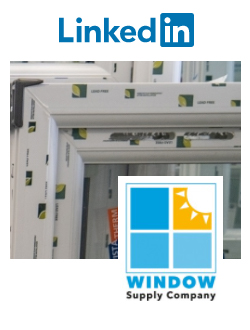Residue on Glass and How to Remove it
It is not uncommon to notice some residue on glass panes after windows have been installed. This is because of the way glass is manufactured and transported. Glass is fragile, so it’s necessary to protect the panes from damage throughout the manufacturing, fabrication, storing and transportation process.
Usually, separator pads and suction cups are used to prevent scratches, cracks or breakage. Although it’s a small price to pay to ensure glass arrives pristine and intact, this can leave some residual marks behind on glass.
While they will fade in time, these marks can become more noticeable during natural processes like condensation. And so, it’s understandable if you want to speed up the dissipation process and get windows looking as clean and clear.
Read on to discover how to get sticker residue off glass or give us a call today on 01501 643 100 for some aftercare advice.
Where does residue on new glass come from?
If windows have just been installed, it is likely residue has come from the manufacture and transportation process. Glass fabrication and installation processing marks are very common.
Window fabrication and installation processes utilise many means to process, store, transport and install glass. These processes are used to prevent glass to glass contact or glass damage to ensure glass is safely handled. These processes often include the use of separator pads and suction cups to transport and separate glass.
Separator pads and suction cups
Suction cups are used during the manufacturing and installation process to move large panes of glass safely and separator pads are dividers between glass to prevent scratches during transportation.
The use of these devices during fabrication and installation does not leave a residue on the glass surface visible to the naked eye, but can sometimes become visible under certain conditions, such as:
1. Condensation
When condensation is formed on the exterior glass unit, the appearance of the outline of separator pads and suction cup marks can sometimes appear.
It should be noted that condensation forming on the exterior glass unit is perfectly normal and means that the window is performing exactly as designed. It is blocking heat
from one side of the glass unit from reaching the other side. Exterior condensation on energy efficient windows is quite common.
2. Wet glass
When glass is examined under a microscope, the glass surface contains very small ridges.
Sometimes very small, minute particles on separator pads and suction cups can be deposited onto the glass surface and settle into these ridges.
While not visible these particles change the surface texture of the glass which then affects how water droplets adhere to the glass surface. This explains why separator pads and suction cup marks are more visible on wet glass than dry glass.
This does not affect functionality, performance or longevity of the glass, but it can be distracting or irksome once you notice it.

How to remove suction cup, separator pads or sticker residue from glass
This condition will naturally dissipate over time with normal exposure to the elements and regular glass cleaning.
In the meantime, these marks can sometimes be minimised or removed with the use of a glass polishing agent, such as CRL’s cerium oxide mixed with water.
Recommended cleaning procedure with Cerium Oxide
To remove residue try the following:
1. Make a water paste with cerium oxide and water
2. Using a clean lint-free cloth wipe the cerium oxide water paste on the glass in a circular
motion with light pressure (cerium oxide is abrasive and can cause scratching if light
pressure is not used)
3. Approximately 3-5 passes of the affected area may be required to remove residue
4. Rinse the glass surface immediately after cerium oxide cleaning with generous amounts of clean water, removing the cerium oxide paste from the glass
5. Using a sponge or clean, lint-free dry cloth, remove water from the glass surface
Once you have completed these steps, you should notice an improvement in the appearance of your glass. If residue is still evident, repeat steps 2, 3, and 4.
Important Notes:
1. Do not clean glass when glass is exposed to direct sunlight
2. Glass should be cleaned by starting at the top and systematically working down to the glass
